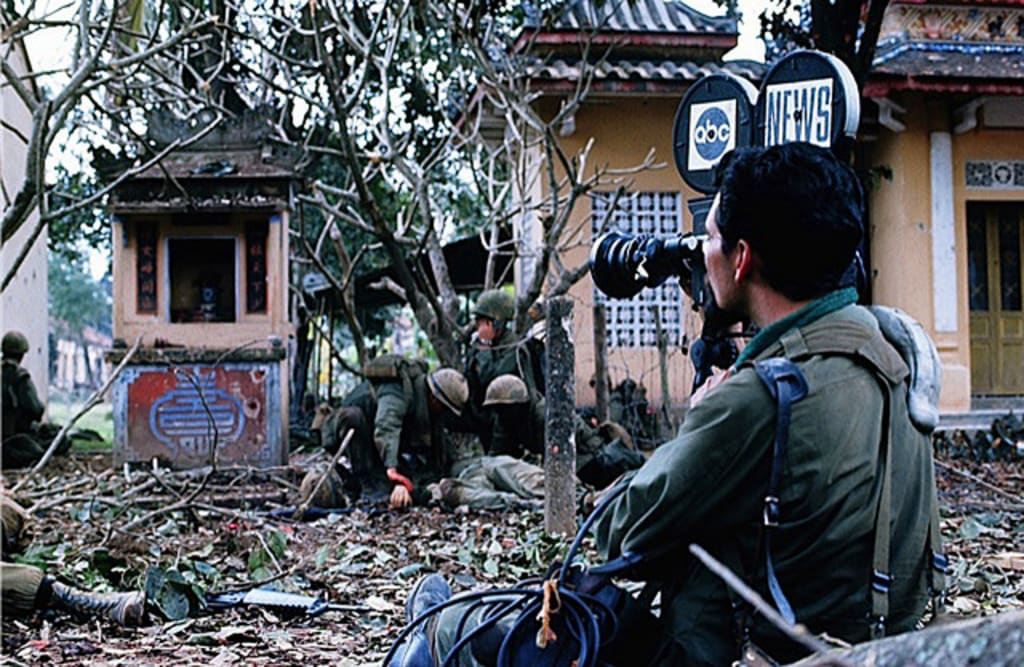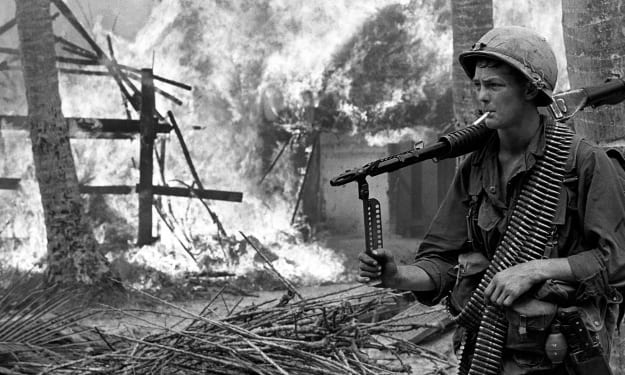The Media in the Vietnam War
How the Technological Advances Helped to Inform the American People like Never Before

The Vietnam War is often referred to as the first televised war. Never had so many journalists been on the ground in a hostile nation. Before Vietnam journalists were viewed as propaganda weapons for military powers to feed through selective updates of a conflict; however, by the time it was over the use of the media in war had changed almost completely.
In previous wars, governments heavily monitored what news was sent home from the front-line. Journalists were key in keeping morale high both at home and on the battlefield, they were unquestionably patriotic because if they weren’t, then readership figures would dwindle. Take the second world war for example. America united behind the common goal of defeating fascism in Europe; the media emphatically rallied behind the protection of democracy and the free world.
In Vietnam, the line the government gave to the people was that the USA had the responsibility to defend the world from Communism. After victory in 1945 it was anticipated, perhaps overly arrogantly, that the USA would be defenders of the peace. Hence, why there was little resistance to the war in the early years. What red blooded American was going to disagree with stopping Communism?
However, this wasn’t the second world war. It wasn’t the beaches of northern France and rolling back the wave of fascism. It was the jungles of South East Asia and a war which was to be affected significantly by the advances in technology. For the first time in a war zone, journalists were often just miles from the action. They could send footage of themselves being so close to the action, often they were too close. 63 journalists were killed in the conflict. It was this level of proximity journalism which played a significant part in turning the nation against the war and forced the US government to withdraw from Vietnam.
Images of the desolate landscapes, destroyed villages and dead civilians added fuel to the anti-war protest campaign which, by the late 1960s, had reached astronomical levels. The American people saw these scenes across the media and it created outrage towards the US Military and its government. More and more Americans were discovering what their own soldiers were doing to the land and people of Vietnam. The governments justification of the war was becoming less and less visible by the end of the decade.
Perhaps the epitome of the effectiveness of on-scene journalism comes from the My Lai massacre of 1968. This was when hundreds of unarmed Vietnamese civilians were slaughtered by US soldiers, between 347 and 504 were killed. The detail of the images and the speed in which the news stories could be broadcast back home meant that in just days the news of the atrocity was plastered all over the world.
The American public were outraged that the soldiers there to ‘save the world from communism’ had turned on the very people they were supposed to be helping. It was condemned in congress, but when the people discovered the attempted cover up operation in the media then it only increased the distrust which Americans had of their government. stars and stripes magazine, the publication of the American armed forces, printed fictional figures in March 1968. They claimed that U.S. Infantryman had killed 128 Communists in a bloody day-long battle. The truth wouldn’t be told for another year.
By the time the truth came out, attitude for the war was declining. According to one Gallop Poll, in January 1969 over half of Americans felt it was wrong to continue the war. The advanced news coverage undoubtedly helped to sway Americans against the conflict, seeing bodies of both US soldiers and Vietnamese civilians on TV and in magazines for months on end showed the people that the war could not be won. There was nothing to gain in Vietnam and by the turn of the decade more and more Americans were realizing this.
The US media changed significantly in its stance on war correspondence over the course of the Vietnam War. By the time President Richard Nixon officially ended US involvement in 1973 it had helped to bring the ugly truth of the war into the living rooms of millions of Americans. It undermined the war effort and pushed civilians out onto the streets in mass protest. The people of America were able to see much more clearly that their country had fought an un-winnable war and its own soldiers had carried out horrific atrocities against civilians just because they ‘looked like’ the enemy. The media may have helped lose the war for Americans, but in Vietnam it showed how it could be a tool of unimaginable social power and help to mobilize the power of the people in order to achieve what is right.






Comments
There are no comments for this story
Be the first to respond and start the conversation.